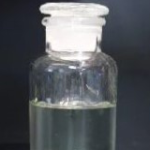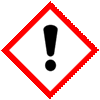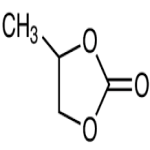CAS Number 108-32-7, Propylene Carbonate USP NF Grade Manufacturers Exporters







CAS Number 108-32-7, Propylene Carbonate Manufacturer Exporter
For Properties Specifications of Propylene Carbonate Click Properties, Specifications of Propylene Carbonate Manufacturer.
For Uses of Propylene Carbonate Click Uses of Propylene Carbonate Manufacturer.
For For SDS MSDS Sheet of Propylene Carbonate Click SDS Safety Data Sheet MSDS Sheet of Propylene Carbonate Manufacturer.
The Properties and Specifications of Propylene Carbonate:
Specifications of Propylene Carbonate USP NF Grade
4-Methyl-1,3-dioxolan-2-one.
Cyclic propylene carbonate CAS 108-32-7
Propylene Carbonate contains not less than 99.0 percent and not more than 100.5 percent of C4H6O3.
Identification: Infrared Absorption.
Specific gravity: between 1.203 and 1.210 at 20C.
pH: Gently but thoroughly mix 10 mL with 0.3 mL of saturated potassium chloride solution in a 100-mL borosilicate volumetric flask. Dilute with carbon dioxide-free water having a pH of 7.0 ± 0.5 to volume. Completely purge the solution by vigorous nitrogen bubbling, and continue the bubbling during the pH measurement. Determine the pH potentiometrically when the reading stabilizes: it is between 6.0 and 7.5.
Residue on ignition: not more than 0.01%.
The Uses of Propylene Carbonate:
Propylene Carbonate is used as a physical solvent for removal of carbon dioxide (CO2) and hydrogen sulfide (H2S) in natural gas treating, oil pyrolysis gas, and synthetic ammonia conversion gas applications. It is also used as an oil solvent and as an extraction agent for olefins and aromatics. it can use as a solvent for lipsticks, skin cleansing products, eye shadows, and mascaras. It can also be used in spin dye printing, synthesis of polymers.
The MSDS-SDS Hazard Statement of Propylene Carbonate:
Propylene Carbonate SDS, Safety Data Sheet
MSDS Sheet, Material Safety Data Sheet 18-Jan-23
Section 1: Chemical Product and Company Identification
Product Name & Other Names: Propylene carbonate or 1,2-Propanediol cyclic carbonate or 4-Methyl-1,3-dioxolan-2-one.
CAS#: 108-32-7
EINECS EC Number: NA
Molecular Formula: C4H6O3
Molecular Weight: 102.09
Relevant uses and uses advised against (if any): Industrial Manufacturing Use.
Section 2: Hazards Identification
GHS, Globally Harmonized System Classification in accordance with 29 CFR 1910
Classification according to Regulation (EC) No 1272/2008
Skin irritation (Category 3), H316
Eye irritation (Category 2A), H319
Labeling according to GHS USA & Regulation (EC) No 1272/2008
GHS Label Elements  Irritant |
Signal Words: Warning
Hazard statements:
H316: Causes mild skin irritation
H319: Causes serious eye irritation.
Precautionary statements:
P262: Do not get in eyes, on skin, or on clothing.
P264: Wash skin thoroughly after handling.
P280: Wear protective gloves/protective clothing/eye protection/face protection.
P273: Avoid release to the environment.
P332+313: If skin irritation occurs: Get medical advice/attention.
P302+ P352 - IF ON SKIN: Wash with plenty of soap and water.
P305+ P351 + P338 IF IN EYES: Rinse cautiously with water for several minutes. Remove contact lenses, if present and easy to do. Continue rinsing.
P337+P313 If eye irritation persists: Get medical advice/ attention.
Section 3: Composition and Information on Ingredients
Product Name & Other Names: Propylene carbonate or 1,2-Propanediol cyclic carbonate or 4-Methyl-1,3-dioxolan-2-one.
CAS #: 108-32-7
Section 4: First Aid Measures
Always consult a physician after the first aid is given.
Eye Contact: Check for and remove any contact lenses. In case of contact, immediately flush eyes with plenty of water for at least 15 minutes. Cold water may be used. Get medical attention.
Skin Contact: In case of contact, immediately flush skin with plenty of water. Remove contaminated clothing and shoes. Cold water may be used. Wash clothing before reuse. Thoroughly clean shoes before reuse. Get medical attention.
Inhalation: If inhaled, remove to fresh air. If not breathing, give artificial respiration. If breathing is difficult, give oxygen. Get medical attention.
Ingestion: Do NOT induce vomiting unless directed to do so by medical personnel. Never give anything by mouth to an unconscious person. Loosen tight clothing such as a collar, tie, belt, or waistband. Get medical attention if symptoms appear.
Section 5: Fire and Explosion Data
Products of Combustion: Emits oxides of carbon and fumes when heated to decomposition.
Suitable extinguishing media: Use water spray, alcohol-resistant foam, dry chemical, or carbon dioxide.
Special Information: In the event of a fire, wear full protective clothing and NIOSH-approved self-contained breathing apparatus with full face piece operated in the pressure demand or other positive pressure mode. At high temperatures under fire conditions, it may produce toxic or irritating fumes. Fire-extinguishing work is done from the windward and the suitable fire-extinguishing method according to the surrounding situation is used.
Section 6: Accidental Release Measures
Personal precautions, protective equipment, and emergency procedures: Avoid breathing dust/fumes/gas/mist/vapors/spray. Use individual protective equipment (waterproof boots, suitable protective clothing, safety glasses, etc.). Do not approach facing the wind.
Environmental precautions: Do not let the product enter drains, soil, or water sources.
Methods and materials used for containment Cleanup procedures and Storage: Do not inhale vapors, mist, or gas. Avoid dust formation. Contain spilled material. Cover with an inert, non-combustible absorbent material, (e.g. sand, earth, diatomaceous earth, vermiculite). Use a shovel to put the material into a convenient waste disposal container. Finish cleaning by spreading water on the contaminated surface and allow to evacuate as per law.
Section 7: Handling and Storage
Precautions for safe handling: Apply according to good manufacturing and industrial hygiene practices. Ensure proper ventilation. In case of insufficient ventilation, wear suitable respiratory equipment. Wash thoroughly after handling. Do not drink, eat, or smoke while handling. Avoid contact with skin, eyes, and clothing. Minimize dust generation. Avoid breathing dust/fumes/gas/mist/vapors/spray. Keep container tightly closed. Avoid ingestion and inhalation. Use individual protective equipment (waterproof boots, suitable protective clothing, safety glasses, etc.).
Conditions for safe storage, including any incompatibilities: Store in cool, dry, and ventilated area away from heat sources and protected from sunlight in tightly closed original container. Keep air contact to a minimum. Store protected from heat, sparks and ignition sources and incompatible materials. Avoid contact with skin and eyes. Avoid inhalation of dust/mist/vapor. Do not store with incompatible materials like strong oxidizing agents and acids and bases. Moisture sensitive combustible liquid.
Section 8: Exposure Controls/Personal Protection
Engineering Controls: Use process enclosures, local exhaust ventilation, or other engineering controls to keep airborne levels low.
Ventilation System: A system of local and/or general exhaust is recommended to keep employee exposures as low as possible.
Personal Respirators (NIOSH Approved): For conditions of use where exposure to dust or mist is apparent and engineering controls are not feasible, a particulate respirator may be worn.
Skin Protection: Wear protective gloves and clean body-covering clothing.
Eye Protection: Use chemical safety goggles and/or full face shield where dusting or splashing of solutions is possible. Maintain eye wash fountain and quick-drench facilities in work area.
Other Control Measures: Maintain good housekeeping in work area. Handle in accordance with good industrial hygiene and safety practice.
Exposure Limits: Not established.
Section 9: Physical and Chemical Properties
Physical state and appearance: Clear colorless liquid.
Odor: fruity.
Odor threshold: Not available.
pH: around 7
Relative density: around 1.19
Melting point/freezing point: Not available.
Boiling Point: 240C.
Flash point: 116C (241F) - closed cup
Auto-ignition temperature: Not available.
Decomposition temperature: Not available.
Upper/lower flammability or explosive limits: Not available.
Vapor pressure: Not available.
Vapor density: Not available.
Evaporation rate: Not available.
Flammability (solid, gas): Not available.
Partition coefficient: n-octanol/water: Not available.
Solubility: Soluble.
Viscosity: Not available.
Section 10: Stability and Reactivity Data
Stability: It is stable. Incompatible with moisture.
Incompatibility with various substances: strong oxidizing agents and acids and bases.
Polymerization: Will not occur.
Section 11: Toxicological Information
Toxicity to Animals:
(LD50): 5000 mg/kg [Rat].
LD50 Dermal - Rabbit - > 2,000 mg/kg
Carcinogenicity: No component of this product present at levels greater than or equal to 0.1% is identified as possible or confirmed human carcinogen by IARC, ACGIH, OSHA and NTP.
Mutagenic Effects: Not available.
Developmental Toxicity: Not available.
Reproductive Effects: No information available.
Section 12: Ecological Information
Toxicity to fish: semi-static test LC50 - Cyprinus carpio (Carp) - > 1,000 mg/l - 96 h
Toxicity to daphnia and other aquatic invertebrates: static test EC50 - Daphnia magna (Water flea) - > 1,000 mg/l - 48 h.
Toxicity to algae: EC50 - Desmodesmus subspicatus (green algae) - > 900 mg/l - 72 h.
Persistence and Degradability: No information available.
Mobility: No information available.
Bioaccumulation/ Accumulation: No information available.
Results of PBT and vPvB assessment: No data available for assessment.
Section 13: Disposal Considerations
Waste Disposal: Waste must be disposed of in accordance with state and local regulations.
Section 14: Transport Information
DOT USA, TDG Canada & ADR/RID Europe: Not controlled.
IMDG/IMO: Not controlled.
IATA: Not controlled.
Section 15: Other Regulatory Information
USA Regulations:
SARA 311/312 Hazard Categories: See section 2.
California Proposition 65: Not listed.
16. ADDITIONAL INFORMATION
Disclaimer:
*****************************
Our company provides this MSDS sheet in good faith but makes no representation as to its comprehensiveness or accuracy. This SDS sheet is intended only as a guide to the appropriate precautionary handling of the material by a properly trained person using this product. The above information has been compiled from various sources and has the possibility of discrepancy and being out-dated information. Individuals receiving the information must exercise their independent judgment and do further search in determining its appropriateness for a particular purpose. In no case shall our company be liable to loss or damages by the product user.
*****************************
Anmol Chemicals & Pharmaceuticals Pvt. Ltd. is an off-shoot of Anmol Chemicals Taloja. It is located in MIDC Taloja and it is manufacturing pharmaceutical grades of API, Excepients, Food grade and Reagent grade chemicals. Anmol Chemicals & Pharmaceuticals Pvt. Ltd. is a several decades old group of companies, engaged in manufacturing, supplying, distributing, wholesale supplies for actual users, retail or small pack supplies for research and development chemicals, fine and speciality chemicals, pharmaceutical excipients, mineral fortifiers in chemically pure, Analytical reagent grade, IP BP USP Ph Eur EP JP and other pharmaceutical grade monograph including FCC Food grade chemicals and Nutraceuticals, Mineral Fortifiers at best prices.

Propylene Carbonate Structure
CAS Number 108-32-7, Propylene Carbonate Manufacturer Exporter
ANMOL CHEMICALS & PHARMACEUTICALS Pvt. Ltd.
India, USA, Europe, UAE
TELEPHONE: +912223770100
Navi Mumbai, INDIA
e-mail: info(At the rate i.e. @)anmol.org
Copyright. 22-jan-23
We manufacture:
Glacial Acetic Acid Manufacturer

